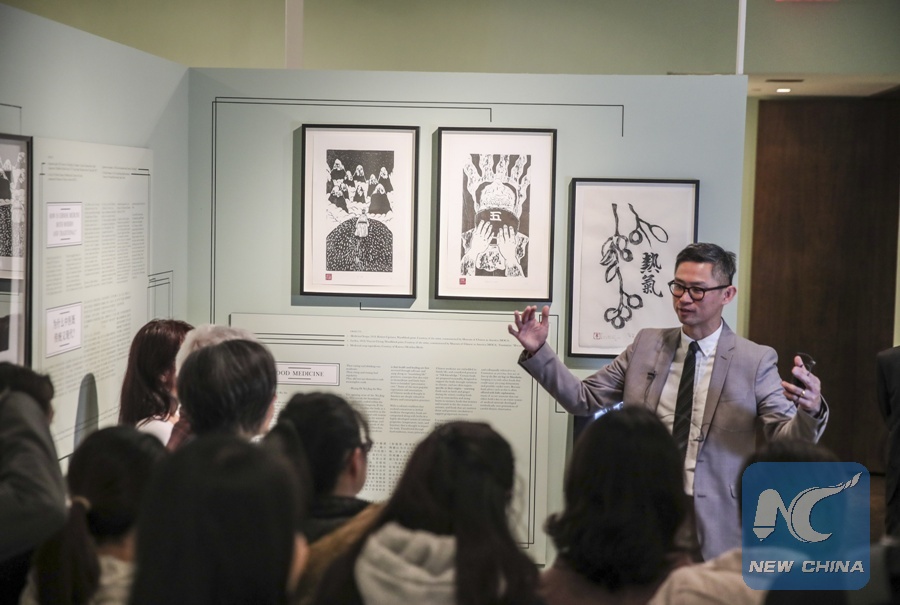New York museum exhibition traces complex story of Chinese medicine
 0 Comment(s)
0 Comment(s) Print
Print E-mail Xinhua, April 28, 2018
E-mail Xinhua, April 28, 2018

GLIMPSE INTO EARLY CHINESE IMMIGRANTS LIFE
Ing Hay, better known as Doc Hay, was the first documented acupuncturists and herbalists in the United States. Hay did "ku li" (a Chinese term meaning "muscle strength") work in the Walla Walla area before he moved to the mining town John Day, eastern Oregon, in 1887.
Hay met his life-long friend and business partner Lung On on the streets of John Day, a small town nestled in the higher elevations of the Blue Mountain range. They purchased the Kam Wah Chung & Company (literally, the "Golden Flower of Prosperity") building, which soon became the center of the Chinese immigrant community in John Day.
The number of Chinese in John Day at that time might have exceeded 2000 - mostly men - making it the third largest Chinatown in the United Sates then. It was a time the Chinese were openly treated as second-class citizens. As the railroads were built and the need for cheap muscle began to fade, the U.S. government slammed the door and started encouraging Chinese to leave.
By 1900, less than 100 Chinese remained. Patrons at Kam Wah Chung shifted from predominantly Chinese to mostly non-Chinese. Despite the prevailing anti-Chinese sentiment in the United States, the store not only survived, but flourished. This was due to the remarkable skills of its two proprietors.
Hay and On were both arrested several times for practising medicine without a license but due to their popularity in the community, each case brought against them was dismissed. All their patients survived the fatal Spanish Flu epidemic in 1919, according to an interesting side note.
CONVERSATION BETWEEN HERITAGES
"The Chinese-American population is a vital part in the making of this country. Unfortunately, it's been under-recognized," Nancy Yao Maasbach, MOCA's president, told Xinhua. "One of its (MOCA) main goals is to help people understand the contributions by Chinese in the formation of this country."
MOCA, which has about 50,000 visitors a year, aims to engage audiences in an on-going and historical dialogue, in which people of all backgrounds are able to see American history through a critical perspective, to reflect on their own experiences, and to make meaningful connections between the past and the present, the global and local, themselves and others, she said.
Mah noted the Chinese medicine exhibitions are exactly a good space for initiating conversations between cultures.
"I think the more that we have conversation, genuine conversation, genuine curiosity, interest, respect will all benefit," she said. "That reflects the benefit of having been of Chinese heritage living in America."
"Through the conversations you have realized that we share so much in common and we need to make it not only a local phenomenon, but a global phenomenon, finding the places we really can connect, learn and benefit one another," Mah said.
"You know, wondering who are we, what is our place in the world and how it relates to us and one of the ways that we can do so beautifully is through art of the landscape painting," said Mah. "The classical Chinese landscape paintings have big, big landscape, but a very very tiny person."
"On the one hand, you might say we're so small and insignificant. The other perspective to look at it is that we have a place in this big landscape, and that we can so definitively see that we fit in there in a very specific way," she said. "And that I think it is the importance of history, the importance of culture and really the importance of medicine."






Go to Forum >>0 Comment(s)